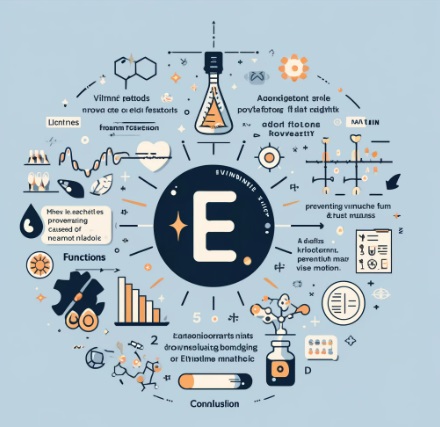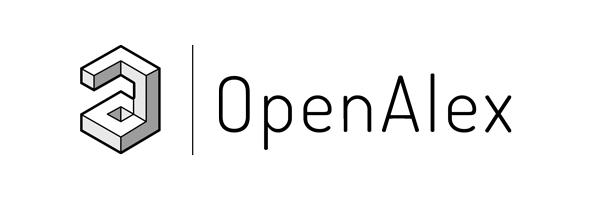THE ROLE OF VITAMIN E AS AN ANTIOXIDANT AND PREVENTING DAMAGE CAUSED BY FREE RADICALS
Views: 371 https://doi.org/10.59807/jlsar.v4i2.89
https://doi.org/10.59807/jlsar.v4i2.89
Keywords:
Vitamin E, Antioxidant, Free Radicals, MetabolismAbstract
Vitamin E is one of the four fat-soluble vitamins that is made naturally in plants. It is one of the necessary vitamins for humans and animals, and the body needs it because it cannot manufacture it. It works to preserve polyunsaturated fatty acids (PUSFA) outside and inside cells in the body and prevents free radical formation reactions resulting from respiratory and respiratory processes and through exposure to toxic external factors such as pollutants. Its deficiency leads to many, Vitamin E comes from plant elements that are in the form of tocopherols, which are compounds that possess the activity of vitamin E. They are in the form of yellow fats that do not dissolve in water, but they do dissolve in organic solvents. The name (Tocopherol) is derived from a Greek word, where “Tocos” means childbirth and Phero from Bear. These words mean the producer of offspring or offspring and are linked to his main role in reproduction in various types of animals. The OL from alcohol is evidence that it is an alcoholic substance.
Downloads
References
L. Radwan Nadia, R. A. Hassan, E. M. Qota, and H. M. Fayek, “Effect of natural antioxidant on oxidative stability of eggs and productive and reproductive performance of laying hens,” Int J Poult Sci, vol. 7, no. 2, 2008, doi: 10.3923/ijps.2008.134.150.
E. H. H. Alsalmany and T. H. T. Mohammed, “Effect of adding natural zeolite and vitamin E to diets of laying hens (Lohman Brown) on some physiological traits and productive per-formance during hot weather,” Bionatura, vol. 7, no. 4, 2022, doi: 10.21931/RB/2022.07.04.12.
A. Baltusnikiene, I. Staneviciene, and E. Jansen, “Beneficial and adverse effects of vitamin E on the kidney,” Frontiers in Physiology, vol. 14. 2023. doi: 10.3389/fphys.2023.1145216.
M. H. AL-Maathedy, T. T. Mohammed, and M. H. Al-Asha’ab, “THE EFFECT OF VITAMIN E SUPPLEMENTATION AND DIFFERENT LEVELS OF DRIED TOMATO POMACE ON COM-MON CARP DIETS (CYPRINUS CARPIO L.) ON PRODUCTIVE PERFORMANCE,” Biochem Cell Arch, vol. 20, no. 2, 2020.
S. I. Peña-Corona et al., “Vitamin E (α-Tocopherol) Does Not Ameliorate the Toxic Effect of Bisphenol S on the Metabolic Analytes and Pancreas Histoarchitecture of Diabetic Rats,” Tox-ics, vol. 11, no. 7, 2023, doi: 10.3390/toxics11070626.
H. S. Abedalhammed, A. S. Naser, M. H. AL-Maathedy, T. T. Mohammed, B. T. Jaber, and M. H. Al-Asha’ab, “THE EFFECT OF VITAMIN E AS AN ANTIOXIDANT WITH DIFFERENT LEV-ELS OF DRIED TOMATO POMACE SUPPLEMENTATION ON DIETS OF COMMON CARP (CYPRINUS CARPIO L) ON BLOOD INDICES,” Biochem Cell Arch, vol. 20, no. 2, 2020.
Y. A. Attia, E. A. Ashour, S. A. Nagadi, M. R. Farag, F. Bovera, and M. Alagawany, “Rice Bran as an Alternative Feedstuff in Broiler Nutrition and Impact of Liposorb® and Vitamin E-Se on Sustainability of Performance, Carcass Traits, Blood Biochemistry, and Antioxidant Indices,” Vet Sci, vol. 10, no. 4, 2023, doi: 10.3390/vetsci10040299.
U. Puthpongsiriporn, S. E. Scheideler, J. L. Sell, and M. M. Beck, “Effects of vitamin E and C supplementation on performance, in vitro lymphocyte proliferation, and antioxidant status of laying hens during heat stress,” Poult Sci, vol. 80, no. 8, 2001, doi: 10.1093/ps/80.8.1190.
A. Tatar, R. Kasaeizadeh, B. Shobeirinia, L. Abdali, and R. Baeelashaki, “THE EFFECT OF US-ING DIFFERENT LEVELS OF VITAMIN E ON THE PRODUCTIVE TRAITS OF BROILER CHICKENS,” Journal of Life Science and Applied Research, vol. 4, no. 1, 2023, doi: 10.59807/jlsar.v4i1.56.
H. K. Biesalski, “Vitamin E Requirements in Parenteral Nutrition,” Gastroenterology, vol. 137, no. 5 SUPPL, 2009, doi: 10.1053/j.gastro.2009.07.073.
A. K. Panda, S. V. Ramarao, M. V. L. N. Raju, and R. N. Chatterjee, “Effect of dietary supple-mentation with vitamins e and C on production performance, immune responses and antiox-idant status of White Leghorn layers under tropical summer conditions,” Br Poult Sci, vol. 49, no. 5, 2008, doi: 10.1080/00071660802337233.
M. Shakeri, E. Oskoueian, H. H. Le, and M. Shakeri, “Strategies to combat heat stress in broiler chickens: Unveiling the roles of selenium, vitamin E and vitamin C,” Veterinary Sciences, vol. 7, no. 2. 2020. doi: 10.3390/VETSCI7020071.
A. Garg and J. C. Y. Lee, “Vitamin E: Where Are We Now in Vascular Diseases?,” Life, vol. 12, no. 2. 2022. doi: 10.3390/life12020310.
C. K. Sen, S. Khanna, and S. Roy, “Tocotrienols: Vitamin E beyond tocopherols,” in Life Sciences, 2006. doi: 10.1016/j.lfs.2005.12.001.
A. A. Saki, M. M. Rahmati, P. Zamani, K. Zaboli, and H. R. Matin, “Italian Journal of Animal Science Can Vitamin C Elevate Laying Hen Performance, Egg and Plasma Characteristics Under Normal Environmental Temperature? Can vitamin C elevate laying hen performance, egg and plasma characteristics under normal environmental temperature?,” 2016, doi: 10.4081/ijas.2010.e60.
P. J. Butterworth, “Lehninger: principles of biochemistry (4th edn) D. L. Nelson and M. C. Cox, W. H. Freeman & Co., New York, 1119 pp (plus 17 pp glossary), ISBN 0-7167-4339-6 (2004),” Cell Biochem Funct, vol. 23, no. 4, 2005, doi: 10.1002/cbf.1216.
C. FAUSTMAN, R. G. CASSENS, D. M. SCHAEFER, D. R. BUEGE, S. N. WILLIAMS, and K. K. SCHELLER, “Improvement of Pigment and Lipid Stability in Holstein Steer Beef by Dietary Supplementation with Vitamin E,” J Food Sci, vol. 54, no. 4, 1989, doi: 10.1111/j.1365-2621.1989.tb07899.x.
G. Edwards, C. G. Olson, C. P. Euritt, and P. Koulen, “Molecular Mechanisms Underlying the Therapeutic Role of Vitamin E in Age-Related Macular Degeneration,” Frontiers in Neurosci-ence, vol. 16. 2022. doi: 10.3389/fnins.2022.890021.
Th. Th. Mohammed, Z. T. Mohamed, and F. M. H. Alkhilani, “The effect of adding different levels of artificial antioxidants and natural antioxidants in the diet on production and physi-ological performance in laying hens,” 2012.
H. Zain, A. Tatar, O. M. Alabi, and M. Samiei Zafarghandi, “THE EFFECT OF USING DIF-FERENT LEVELS OF VITAMIN E ON THE ANTIOXIDANTS STATUS OF BROILER CHICK-ENS,” Journal of Life Science and Applied Research, vol. 4, no. 1, 2023, doi: 10.59807/jlsar.v4i1.58.
S. M. Abdulateef et al., “Effect of aromatase inhibitors on sex differentiation and embryonic development in chicks,” Vet Med Sci, vol. 7, no. 6, 2021, doi: 10.1002/vms3.623.
S. M. Abdulateef, O. K. Atalla, M. Q. A. L-Ani, T. H. T. Mohammed, F. M. Abdulateef, and O. M. Abdulmajeed, “Impact of the electric shock on the embryonic development and physiological traits in chicks embryo,” Indian Journal of Animal Sciences, vol. 90, no. 11, 2021, doi: 10.56093/ijans.v90i11.111568.
S. M. Abdulateef, M. A. Al-Bayar, A. A. Majid, S. S. Shawkat, A. Tatar, and M. Q. Al-Ani, “Ef-fect of exposure to different light colors on embryonic development and neurophysiological traits in the chick embryo,” Vet World, vol. 14, no. 5, 2021, doi: 10.14202/vetworld.2021.1284-1289.

Published
How to Cite
Issue
Section
Citations
License
Copyright (c) 2023 Copyright (c) 2022 Creative Commons Attribution 4.0 International (CC-BY 4.0)

This work is licensed under a Creative Commons Attribution 4.0 International License.
This journal is licensed under a Creative Commons Attribution 4.0 International (CC-BY 4.0)















